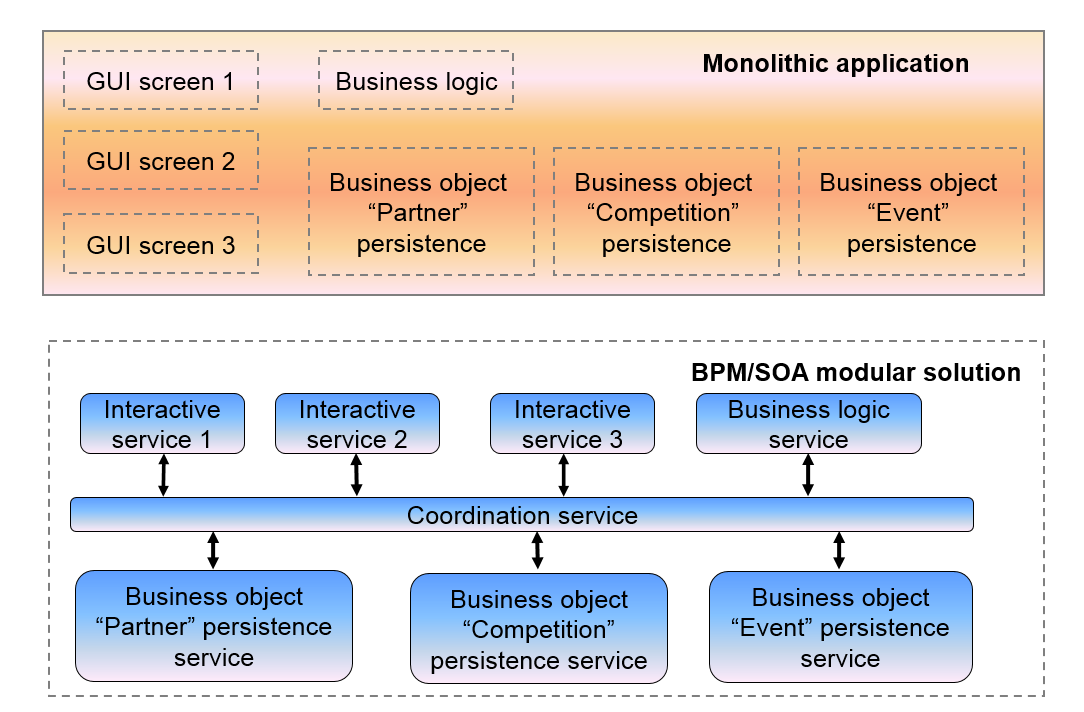- integration
- incorporation of new technologies
- old programming techniques
- heavy releases
- availability of industrial products for previously unique functionality (e.g. event management)
- some generic functionality is commodity
- just slow to evolve
The goal of modernisation can be formulated as the following:
- Agile (with the pace of business) provisioning of business solutions
- From disparate IT applications to a business execution platform which will “liberate” people for business innovations
- Combine various provisioning methods: assemble, rent, buy, build, outsource, centralised vs. kept locally, standardised, re-engineered or automated
- Step-by-step technical transformation in two interrelated and intermixed streams:
- Disassemble ERP functionality into services
- Re-assemble business functionality via processes
- Business evolution has to drive technical transformation (each transformational step brings something to business and does some modernisation)
- A processes defines Who (roles) is doing What (business objects), When (coordination of activities), Why (business rules), How (business activities) and with Which Results (performance indicators)
- Business processes make bigger services from smaller services
Disassemble an application into services schematically looks as the following:
Of course, disassemble of an ERP is more complex:
Advantages of this approach are the following:
- Use of specific functionality from COTS (e.g. event management)
- Use of generic functionality from “suites”
- In-house developing ONLY specific-business-core-functionality
- Integration of commodity or best-to-fit functionality
- Faster evolution is possible because of BPM/SOA architecture
In case of transformation of a group of related legacy applications – please see http://improving-bpm-systems.blogspot.com/2013/06/enterprise-patterns-eclipse.html
Thanks,
AS






No comments:
Post a Comment